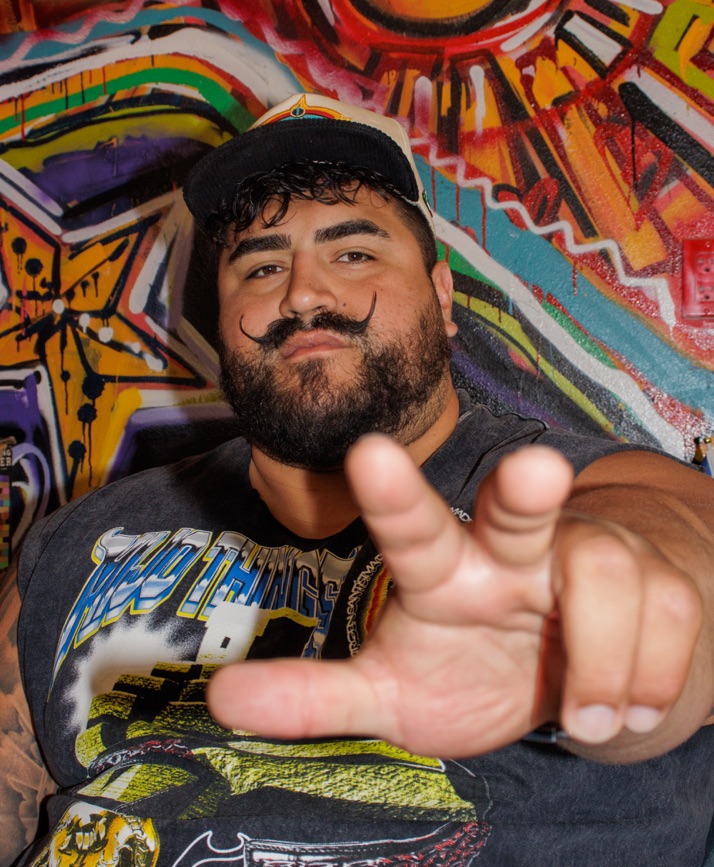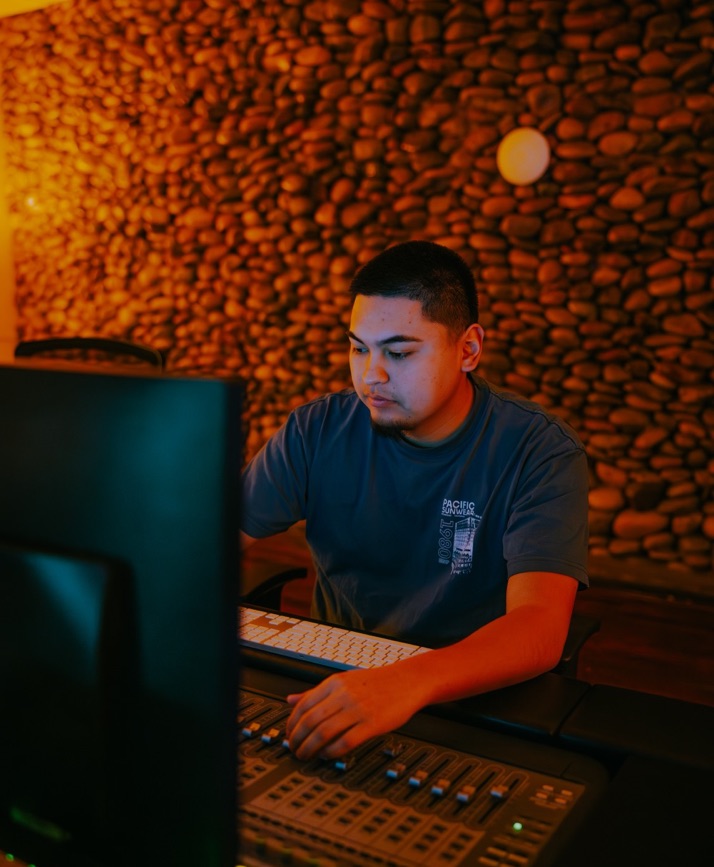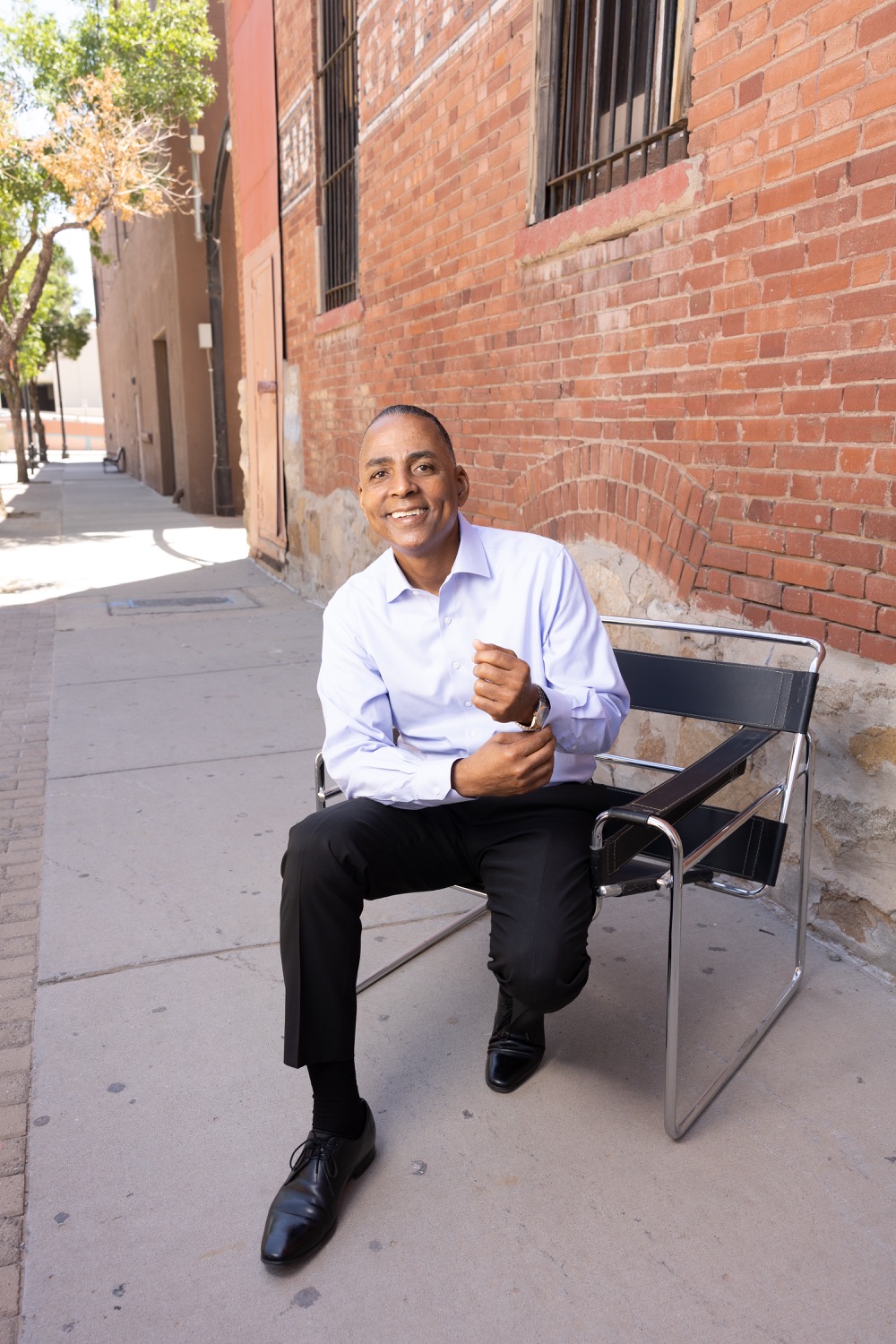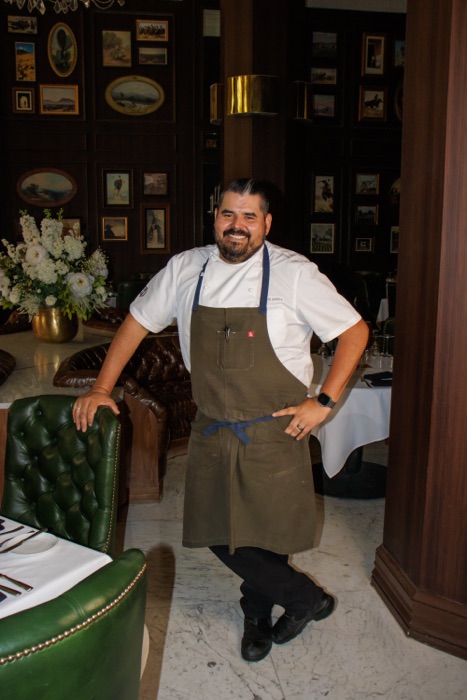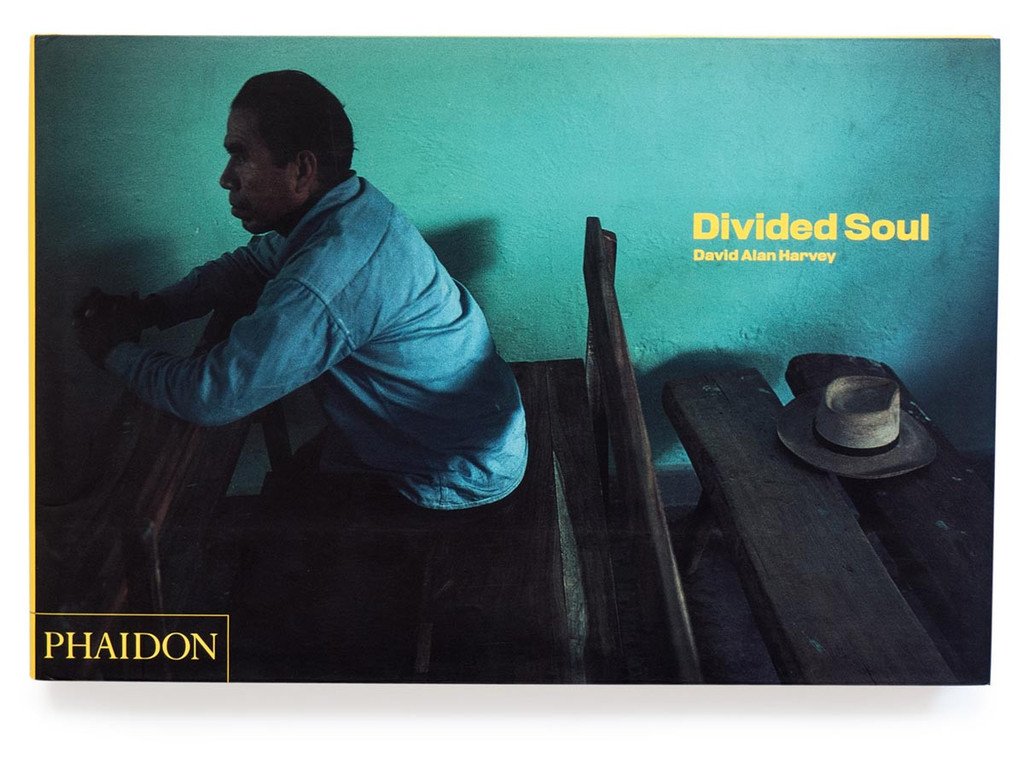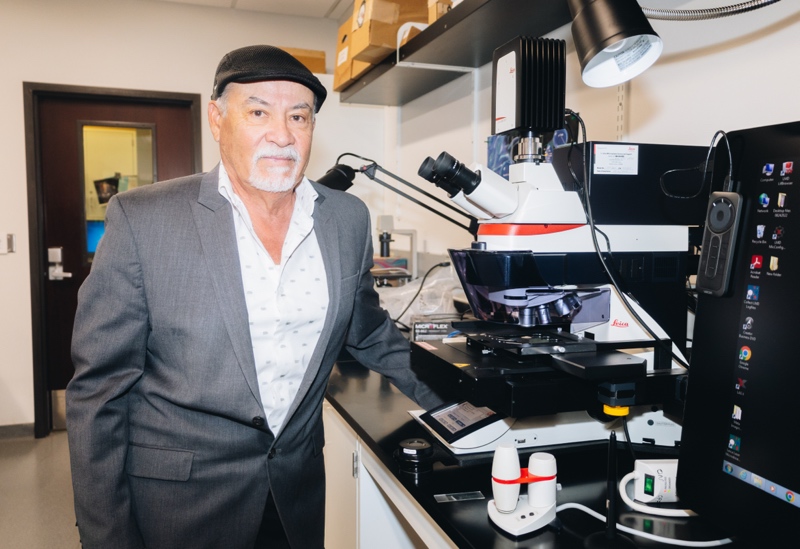
By
Annabella Mireles
According to the National Institute of Health, 2,001,140 new cancer cases and 611,720 cancer deaths are projected to occur in the United States in 2024. Blood cancers account for about ten percent of all diagnosed cancers in the U.S. each year.
However, a compound named Thiophene F-8, discovered by UTEP graduate student Mia Swain, Ph.D. and principal investigator Renato Aguilera, Ph.D. could open doors for a more promising future for lymphoma and leukemia therapies.
Leukemia is a type of blood cancer that starts in blood forming tissue, like bone marrow, and lymphoma is a blood cancer that starts in the lymphatic system such as lymph nodes or the spleen. Leukemia and lymphoma are both among the top 10 most common cancers. Prevalence is increasing, with the Leukemia and Lymphoma Society reporting that approximately every three minutes, one person in the U.S. is diagnosed with leukemia or lymphoma.
Dr. Aguilera is a UTEP professor in the Department of Biological Sciences who aims at researching compounds that can eventually create a better way to treat patients with blood cancers, specifically lymphoma and leukemia.
He has been a professor in the Department of Biological Sciences for the past 22 years.
“I fell in love with the field of immunology,” he said. “Many of the cells we study are cancer cells of the immune system, so basically lymphomas. I decided to move into the field of cancer research because I realized that, at one point or another, we are going to get some form of cancer. So, I thought I would devote the remainder of my career to look for drugs that have activity against cancer cells.”
Dr. Swain led this project for her Ph.D. and spoke about what this means for leukemia and lymphoma therapies.
“Typical therapies include chemotherapy and radiation,” she said. “A lot of different compounds that are being tested clinically right now could potentially be used as an adjuvant therapy that can be combined with current therapies. Drugs come in many forms. I don’t know yet if this can be intravenously injected or maybe compacted in a pill, but further studies of this on in vivo models can help us answer that question.”
Although finding the compound is impressive and a challenging journey in itself, finding out how it kills cells is even more vital.
“The issue is if you find a compound that kills lymphoma, the question becomes: ‘Does it kill everything else or does it only kill lymphoma?’” he said. “Part of what we do is kind of like a crime scene investigation. Once you kill a cell, the question is how did it happen? Since we don’t have bullets where you can see a definite bullet imprint on a human in cells, we don’t know how they’re dying.”
Through these tests, researchers can discover just how potent the compound is.
“We even check to see if it could have activity against breast cancer, prostate, etc.,” the researchers explain. “It takes several months to determine how the compound is killing the cells. If the compound is too toxic, meaning it kills everything in sight, it’s not useful for chemotherapy. You’re not going to want to swallow something that will burn your mouth. So, we want a compound that is killing cells we intend to kill, such as rapidly growing cancer cells.”
With the guidance of Dr. Aguilera, Dr. Swain was able to complete her dissertation and received her Ph.D. in 2022.
“I started during the second half of my Ph.D. which was in 2020,” Swain said. “Dr. Aguilera was my mentor. So, whenever I had a question as far as what I should do next, he offered a little bit of guidance.”
Dr. Swain says that the compound still needs to be in vivo tested before being picked up for a clinical trial, but says she sees a bright future for lymphoma and leukemia patients as well as wanting people to be hopeful about better therapies coming into existence.
“There are always people trying to discover new therapies,” she said. “There are scientists staying in the lab, reading, running experiments, trying to work our hardest to find a new drug. People should know that researchers are always trying to find a new anti-cancer compound. We’re always trying to understand tumor microenvironments and different avenues of approach. If an individual is diagnosed with cancer, things may seem bleak, but there are people working behind the scenes to make the world a better place.”
After in vivo testing, the next step is for the compound to be picked up for clinical trials where it will go through rigorous testing before being prescribed and integrated into traditional therapies.
Such hard work done by Dr. Swain and Dr. Aguilera and other researchers will help change the future of cancer therapies by getting us one step closer to finding better treatments.




